
Contact us
Contact
Would you be interested in collaborating with us?
contact@yallahmorocco.org
Hiring
Would you like to join our growing team?
hello@yallahmorocco.org
Don't miss the latest news and updates.
Contact us
Contact
Would you be interested in collaborating with us?
contact@yallahmorocco.org
Hiring
Would you like to join our growing team?
hello@yallahmorocco.org
Don't miss the latest news and updates.
Type and hit enter
How are You ?Labass ?
____________
Morocco’s history stretches back millennia, shaped by the rise and fall of dynasties, each leaving its indelible mark on the cultural and architectural landscape of the country. The first great dynasty to unify Morocco under Islam was the Idrisid dynasty in the 8th century, which saw the foundation of Fes, a city that would become a beacon of Islamic scholarship and culture. Later, the Almoravids and Almohads brought military prowess and architectural grandeur, constructing the Koutoubia Mosque and the Kasbah of the Udayas.
The Marinid dynasty in the 13th century further shaped the intellectual and spiritual life of Morocco, leaving behind exquisite medersas (Islamic schools), such as the Bou Inania in Fes. The opulent Saadian Tombs and El Badi Palace in Marrakesh reflect the grandeur of the Saadian dynasty, while the more recent Alaouite dynasty, which still reigns today, continues to influence Morocco’s path, guiding it into the modern era while maintaining the kingdom's rich heritage.
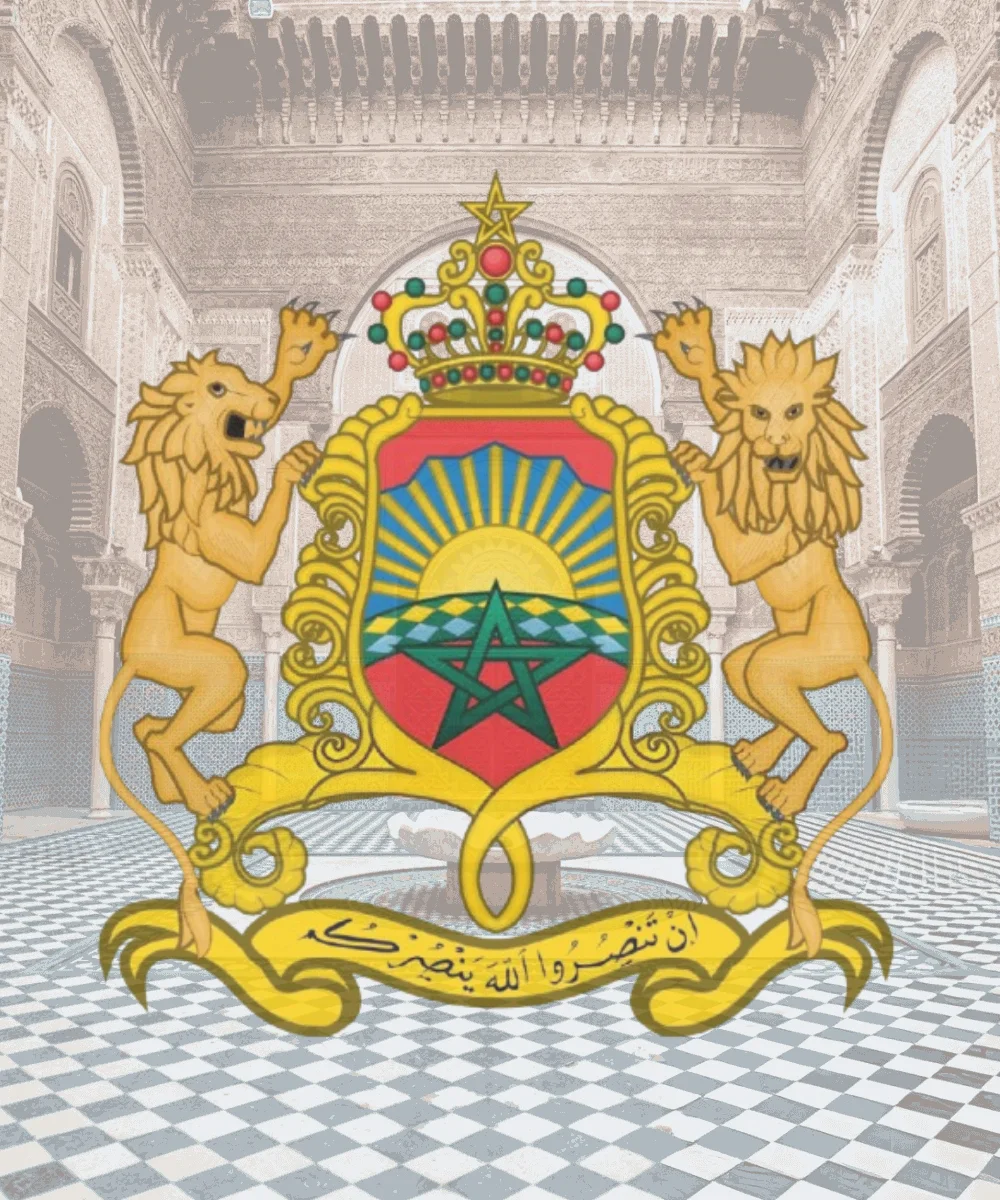
Yallah Meaning
A word that reverberates across Morocco, from the bustling souks of Marrakesh to the quiet mountain villages of the Rif. Its meaning transcends mere language, urging people forward, calling them to move, to explore, and to act.
In Morocco, "Yallah" is not just an expression but a pulse, a rhythm of life that beckons everyone to join in, an invitation to embark on journeys both literal and cultural. It embodies the spirit of adventure, hope, and community. This essence is what YallahMorocco strives to capture a gateway to explore the rich, diverse, and timeless beauty of the Kingdom of Morocco.
Experience the real Morocco. Let a local expert handle the planning for you.
Moroccan architecture is a vivid reflection of the kingdom’s history, blending Berber, Arab, and Andalusian influences. The skyline of every major Moroccan city is punctuated by towering minarets and intricate mosques, their walls adorned with the finest examples of Moroccan craftsmanship. Mosques like the Hassan II Mosque in Casablanca, one of the largest in the world, captivate with their sheer scale and delicate artistry.
Beyond mosques, Morocco’s medersas (Islamic schools) are masterpieces in their own right. Take the Ben Youssef Medersa in Marrakesh, where you’ll find the ancient technique of zelij (mosaic tile work) forming complex geometric patterns. Each tile seems to dance across the surface, reflecting the divine harmony central to Islamic art.
The distinctive Moroccan architectural motif darj w ktaf, a repetitive stair-step design, is omnipresent, adorning walls, arches, and even doorways, symbolizing the continuous journey of life. Stucco work, with its delicate floral and arabesque motifs, creates a lace-like façade that softens the harshness of stone, while ceilings made of carved cedarwood, often painted in vivid reds, blues, and greens, exude warmth and elegance. Merlons (sawtooth shaped battlements) crown the tops of Kasbahs like those found in Ait Benhaddou, standing guard over the desert as silent sentinels of time.





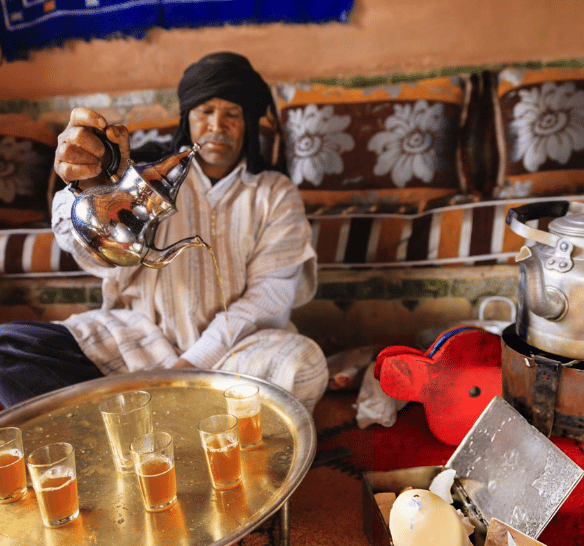
Morocco is a nation woven from diverse cultural threads, each region offering a unique interpretation of its traditions. The Berber tribes of the Atlas Mountains wear hand-woven woolen cloaks and colorful jewelry, while in the north, influenced by centuries of Andalusian presence, you’ll find finely embroidered caftans, robes worn during festivals and weddings, each one telling a story of its region’s identity.
The music of Morocco mirrors its diversity. In Fes, the strains of Andalusian classical music transport you to the courts of medieval Al-Andalus, while the gnawa rhythms of Essaouira pulse with the spiritual energy of sub-Saharan Africa. In the south, the Ahidous dance of the Berbers is performed during celebrations, accompanied by rhythmic chanting and percussion that reverberate through the mountain air.
Each region’s unique music and clothing represent the living culture of Morocco, passed down through generations and preserved with pride. The blue-robed Tuareg of the Sahara, the jellabas of the north, and the embroidered belts of the Souss each speak of a Morocco that is not one but many—united in its diversity.
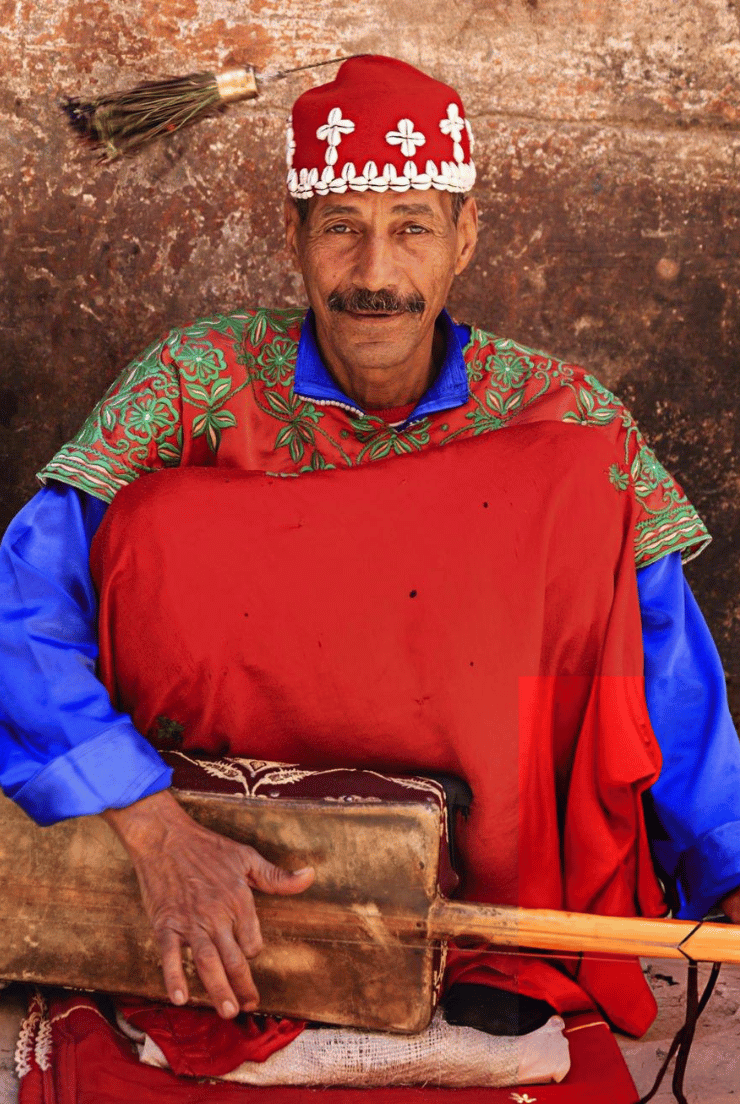
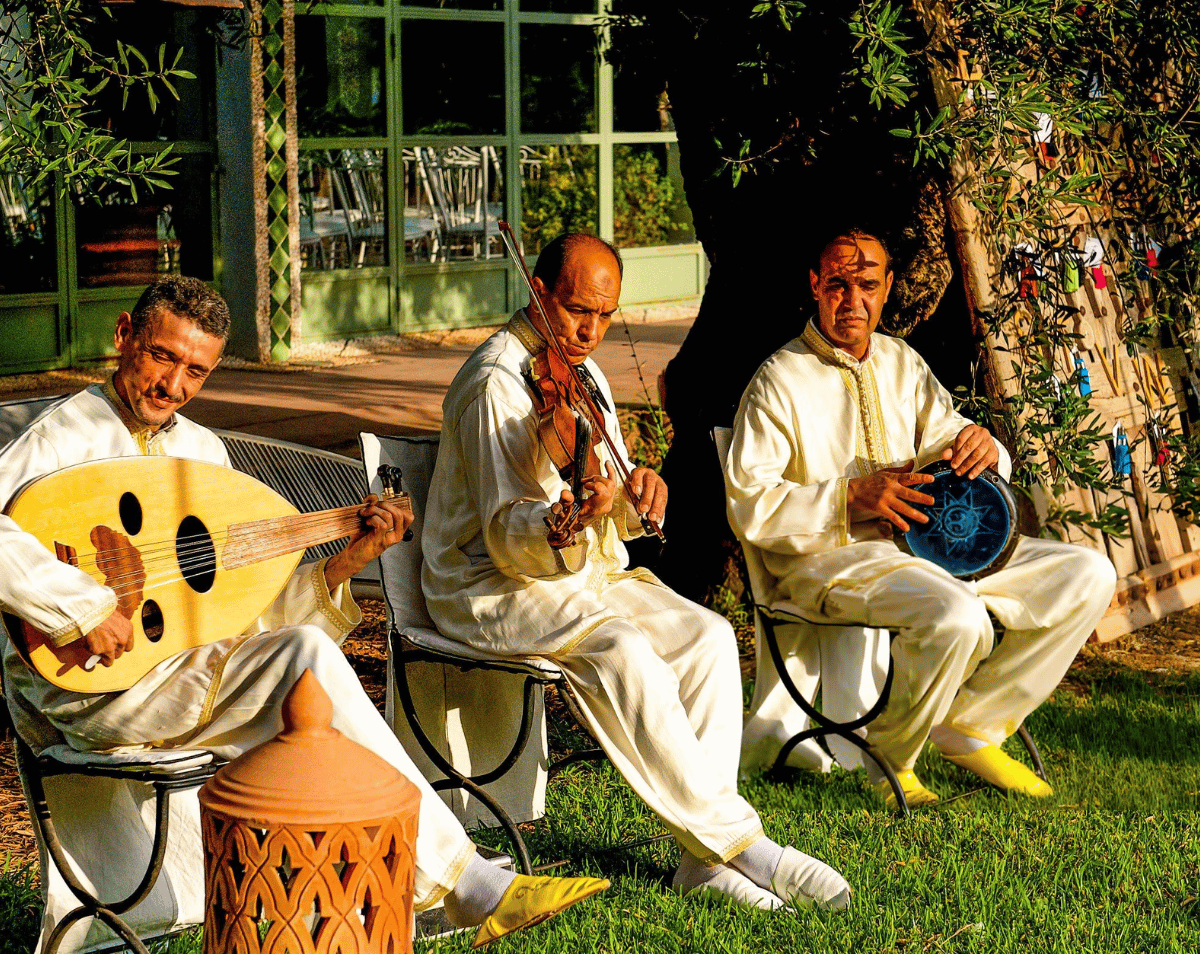
To know Morocco is to embark on a journey through time, where every alley, every architectural flourish, and every note of music tells the story of a kingdom forged through the ages.
Yallah ! Join us as we explore this remarkable country, where the past and present are woven together, and where the call to adventure awaits around every corner. Whether through the majesty of its architecture, the intricacies of its art, or the warmth of its people, Morocco will leave you enchanted—a kingdom that stays with you long after you’ve left.
His solo work was as commercially successful as most debuted in the top 10 of the UK Music Charts.
CAF Africa Cup Of Nations Morocco 25, from Dec. 21, 2025
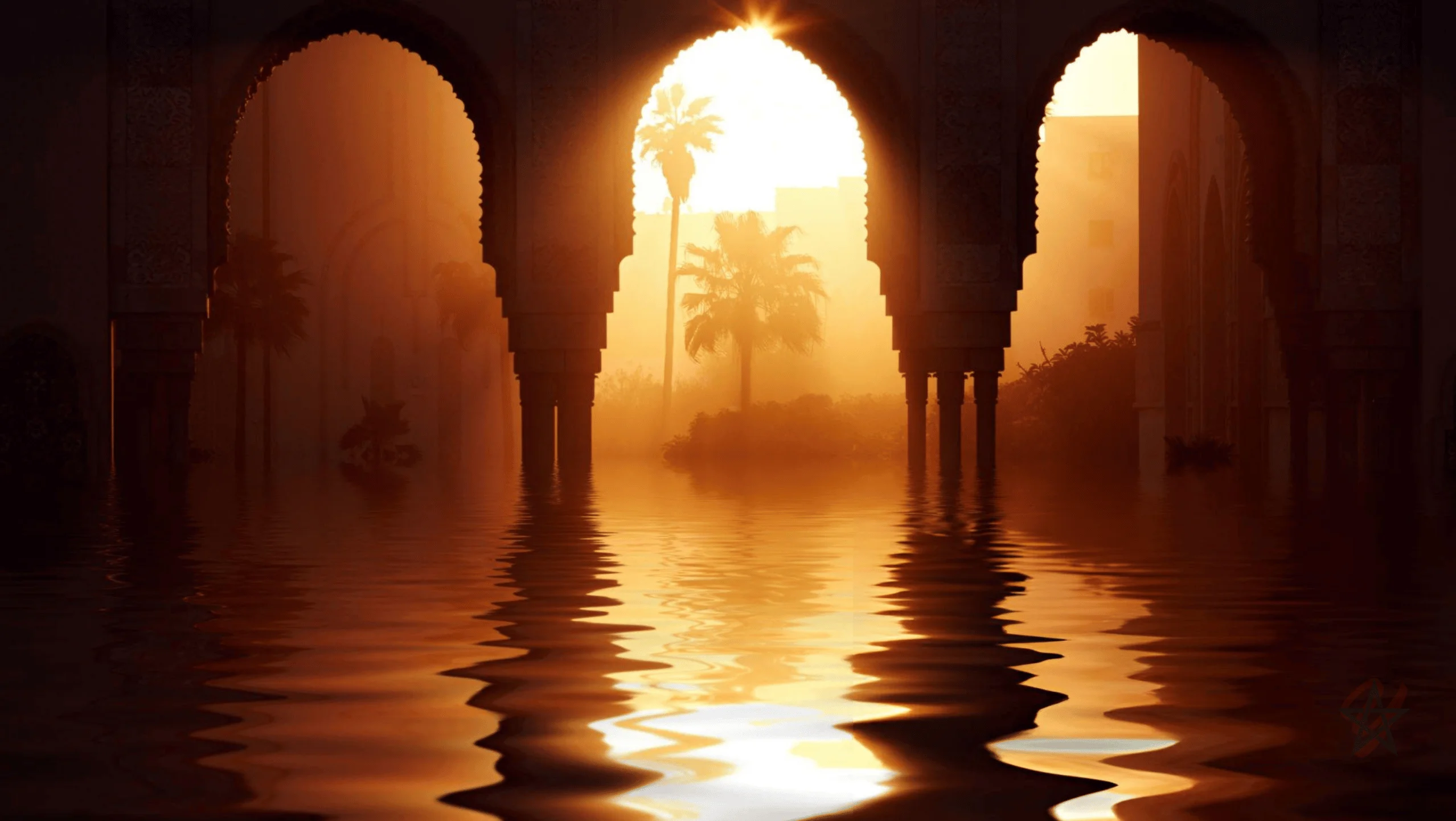
FAQ - Frequently Asked Questions
"Yallah" is an Arabic word meaning "Let's go!" or "Hurry up!"—it’s often heard in everyday conversations across Morocco. It's more than just a phrase; it's a cultural call to action, encouraging movement, enthusiasm, and community. Whether you're heading out to explore the medinas or joining a lively souk, "Yallah" is the heartbeat of Moroccan life. On Yallah Morocco, it symbolizes our invitation for you to embark on your journey through this enchanting country.
Morocco is a year-round destination, but the best time to visit depends on your preferences:
Morocco is full of breathtaking destinations. Here are a few unmissable highlights:
Morocco is considered one of the safest countries in Africa for tourists. However, like any destination, it’s important to stay vigilant in crowded places, especially in large markets or busy cities. Petty theft can occur, so keep an eye on your belongings. Always opt for official guides and transportation to ensure your journey is smooth and secure.
Visa requirements for Morocco depend on your nationality. Citizens of the European Union, the United States, Canada, and many other countries can visit Morocco visa-free for up to 90 days. We recommend checking with the nearest Moroccan embassy or consulate for the most current visa requirements specific to your nationality.
Morocco is a multilingual country. The official languages are Arabic and Amazigh (Berber). French is widely spoken, especially in business and government contexts, while English is becoming increasingly common in tourist areas. You’ll also find pockets of Spanish, particularly in northern Morocco near Tangier and Tetouan.
While Morocco is relatively liberal, it's respectful to dress modestly, especially when visiting religious sites or rural areas. For men, lightweight pants and shirts are ideal, while women may opt for loose-fitting clothing that covers the shoulders and knees. Comfortable shoes are essential for exploring the medinas and walking tours. In the desert or mountains, bring a hat, sunglasses, and layers for cooler evenings.
Absolutely! Visiting the Sahara Desert is one of the most magical experiences in Morocco. Popular entry points include Merzouga and Zagora, where you can arrange camel treks, 4x4 excursions, and even overnight stays in luxury desert camps. Expect golden sand dunes, breathtaking sunsets, and starlit skies. We recommend bringing sunscreen, a hat, and plenty of water.
Definitely! Moroccan cuisine is a feast for the senses. Traditional dishes include:
The official currency is the Moroccan Dirham (MAD). It’s best to have some cash on hand, especially in rural areas or smaller markets where card payments may not be accepted. ATMs are widely available in cities and tourist destinations, and credit cards are commonly used in hotels, larger restaurants, and shops.
Adding {{itemName}} to cart
Added {{itemName}} to cart